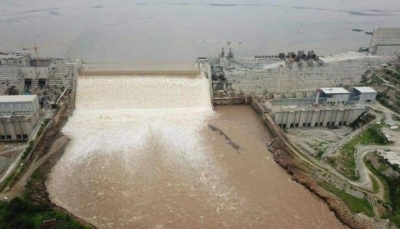With China losing steam, India needs to revive the Asia Africa Growth Corridor in outreach to Africa
By IANS | Published: July 19, 2021 04:27 PM2021-07-19T16:27:05+5:302021-07-19T17:10:33+5:30
New Delhi, July 19: India is looking at reviving the Asia Africa Growth Corridor (AAGC) the mega infrastructure ...

With China losing steam, India needs to revive the Asia Africa Growth Corridor in outreach to Africa
New Delhi, July 19: India is looking at reviving the Asia Africa Growth Corridor (AAGC) the mega infrastructure project that was launched in 2017 to connect Asia and Africa. The contours and finer details of the project, which was essentially a collaboration between India and Japan, could be significantly altered. Other stakeholders could be brought in as well to revive the project.
The almost still-born AAGC was seen as an attempt to provide an alternative to the China-powered Belt and Road Initiative (BRI).
"At a time when the world is looking at an alternative to Chinese projects, the AAGC holds promise but with the Covid 19 pandemic and its economic impact, many projects have come under the spotlight," an insider told India Narrative. However, he added that a new funding mechanism which is viable and transparent needs to be chalked out.
Other countries along with multilateral agencies including the ones focused on Asia such as Asian Development Bank need to be roped in to inject life into the project.
At present, China, which is aggressively carrying out the BRI execution, is the largest lender in the continent. However, from 2019, China's loan commitments to Africa have reduced.
"We should think about how we can revise the AAGC to make it more attractive and beneficial. It should be a profit-driven project rather than a human development vision," The French Institute of International Relations (IFRI) pointed out.
According to a study by Carnegie Endowment for International Peace, Chinese financiers committed $153 billion to African public sector borrowers between 2000 and 2019. "After rapid growth in the 2000s, annual lending commitments to Africa peaked in 2013, the year the BRI was launched. By 2019, though, new Chinese loan commitments amounted to only $7 billion to the continent, down 30 percent from $9.9 billion in 2018," it said.
That apart, China's "resource-backed lending model for financing infrastructure projects" in which the borrowing country commits future revenues to be earned from its natural resource exports to pay loans secured from Chinese creditors have raised doubts.
Africa's debt problem
"China's business dealings in Africa are raising eyebrows," a report published by Nairobi News noted.
"It is true many African countries have shown their concerns over the Chinese lending pattern but the problem is that other sources of funds are often not available to them and this creates a condition where they have to borrow more from China," Pradeep S Mehta, Secretary General, CUTS International, told India Narrative.
Last month, Kristalina Georgieva, Managing Director, International Monetary Fund noted that debt levels—which were already elevated before the pandemic—have increased sharply. Public debt in sub-Saharan Africa jumped by more than 6 percentage points to 58 per cent of GDP in 2020, the highest level in almost two decades, she said.
A sectoral decomposition of Chinese loans highlights that more than 65 per cent of its lending goes to infrastructure sectors such as energy, mining, construction, transport among others, The Carnegie study said, adding that in comparison, traditional lenders—mostly from Europe and North America as well as Japan in the OECD-Development Assistance Committee focus more on social sectors like health, population, education, and humanitarian aid.
Not just that. The lending pattern of the other lenders comprises a fair mix of grants and loans.
"It is time that India and other countries look at Africa to ensure partnered development," a business entrepreneur of Indian origin living in Kenya told India Narrative.
G7 initiative
The Group of Seven (G7) countries that held their meeting in June spotlighted an arc between Africa and the Indo-Pacific as the space where they wish to expand their democratic footprint amid China's rise as a global power.
The G7 also announced that it will increase its support to the Indo Pacific and Africa. "We resolve to collaborate with partners around the world, including in the Indo-Pacific and Africa, to actively promote these shared values for the good of all," said the statement.
Meanwhile, US President Joe Biden's proposal of carving out a mega infrastructure plan under the "Build Back Better World" (B3W) initiative, which according to a Financial Times report, would be based on transparency, sustainability and consultation with local communities will be a move to counter the BRI.
"It is yet to be seen what will be the finer details of the proposed project," Mehta said.
Disclaimer: This post has been auto-published from an agency feed without any modifications to the text and has not been reviewed by an editor
Open in app